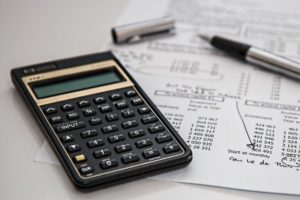Striving to eliminate credit card debt should be a top priority for anyone who has fallen behind on their payments. It’s important to remember that, no matter what caused you to accumulate debt, there are steps you can take now to start digging your way out. Here are 5 steps that can get you on a path toward credit card debt reduction.
How to Reduce Credit Card Debt
Before we begin, remember that it’s never too early to contact a certified debt counselor to get advice about your situation and learn about debt consolidation options, but trying to reduce debt on your own first is recommended.
-
Budget Your Life.
Use a budgeting worksheet or similar tool to evaluate your finances and determine the most efficient ways to disperse your funds. Implementing a budget is the best way to determine how you’re using your money and see where you can cut back to save a little (or a lot!) extra.
-
Make Hard Choices.
It’s not enough to just make a budget. You also have to stick to that plan and cut spending anywhere possible to maximize how much you can use to pay off debts. This means reducing or canceling your cable TV subscription, making all your meals at home, and simply tightening your belt by foregoing luxuries you cannot afford (e.g. salon haircuts, gym memberships, lottery tickets, etc.).
-
Stop Borrowing!
Now that you have mapped out your budget and have a plan to cut unnecessary spending, you should be able to stop relying on credit cards. The only way to get out of debt is to stop using your available credit. This doesn’t mean canceling your accounts, which can hurt your credit score and raise your interest rates. It just means leaving the cards at home and using only cash for purchases.
-
Form a Debt Reduction Strategy.
Having a plan for managing credit card debt and setting achievable goals is a great way to set yourself up for success. There are two common strategies you may consider.
- The Momentum Method – List your debts in order from smallest to largest outstanding balance. Then make larger payments toward the smaller balances first in order to eliminate them quicker. This helps to build momentum because your progress will be visible as you achieve incremental goals of zeroing out some balances.
- Laddering – List your debts in order from highest interest rate to lowest interest rate, and make larger payments toward the accounts with higher interest first. This is the better method mathematically because you’ll save the most money over time, but it provides less positive emotional feedback since it may take longer to get balances down to zero.
With either of these strategies, remember to always be making at least the minimum payments on time to all accounts, and don’t close accounts you’ve paid off completely.
-
Reassess and Move Forward.
At this point, it’s time to take a hard look at your situation and determine if you can realistically wipe out credit card debt on your own. If you’re unable to make any real progress after optimizing your budget and putting all excess cash toward paying down debts, then enrolling in a credit card relief program is likely your best course of action.
If you’re struggling to pay off debt, ACCC can help. Schedule a free credit counseling session with us today.






